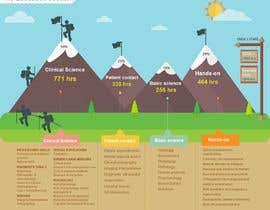Cold Laser Therapy: Misconceptions Vs. Facts
Cold Laser Therapy: Misconceptions Vs. Facts
Blog Article
Content Written By-Barbee Browne
You may have heard conflicting information regarding cold laser therapy, questioning what holds true and what's not. As you weigh the myths against the realities, it's necessary to different misconceptions from clinical proof. Understanding the advantages and possible threats can aid you make notified choices about including this innovative therapy right into your medical care routine.
Common Misconceptions
Usual misconceptions about cold laser treatment can bring about confusion and skepticism among clients seeking choice therapies. One common misconception is that cold laser therapy involves making use of dangerous radiation. In truth, cold laser therapy makes use of low-level laser light that doesn't produce heat or cause damages to tissues.
One more mistaken belief is that cold laser treatment hurts, when in fact, it's a non-invasive and pain-free procedure. loabns to go believe that cold laser therapy is only effective for surface-level issues, such as skin problem. Nevertheless, research has shown its performance in treating a variety of problems, including musculoskeletal injuries and chronic pain.
Furthermore, there's a misunderstanding that cold laser therapy creates instant results after a single session. While some clients may experience relief after one treatment, a series of sessions is typically recommended for optimum outcomes. By eliminating these mistaken beliefs, individuals can make educated choices concerning incorporating cold laser therapy into their health care program.
Scientific Evidence
Misconceptions concerning cold laser treatment can be resolved by taking a look at the scientific evidence sustaining its efficacy. Countless researches have actually checked out the efficiency of cold laser treatment in different clinical problems, such as pain monitoring, cells repair, and swelling reduction. laser hair loss treatment ct has actually revealed that cold laser therapy can help accelerate the recovery procedure by promoting cellular fixing and improving blood flow in the targeted area.
In a study released in the journal Discomfort Research and Management, researchers found that cold laser treatment considerably minimized discomfort degrees in people with persistent neck discomfort contrasted to a placebo therapy.
Another research in the Journal of Rheumatology demonstrated the positive effects of cold laser treatment in decreasing inflammation and enhancing joint feature in people with rheumatoid joint inflammation.
Perks and Dangers
What're the prospective benefits and risks related to cold laser treatment?
Cold laser therapy provides numerous benefits such as decreased inflammation, pain alleviation, and accelerated tissue repair service. By promoting cellular feature and flow, it can help in recovery wounds, lowering swelling, and improving range of movement. Additionally, this non-invasive therapy is typically quick, pain-free, and calls for no downtime, making it a practical choice for many individuals.
Nevertheless, like any clinical treatment, cold laser treatment does feature some dangers. While rare, possible adverse effects may consist of mild tingling, momentary skin inflammation, or a small rise in pain. It's crucial to ensure that the therapy is administered by a qualified medical care expert to lessen any kind of adverse effects and make best use of the advantages.
Furthermore, cold laser therapy may not appropriate for everyone, especially individuals with particular clinical conditions or pregnant females, so talking to a healthcare provider prior to starting therapy is necessary to determine its appropriateness for your details circumstance.
Verdict
To conclude, cold laser therapy is a risk-free and reliable therapy option for bone and joint injuries and chronic discomfort problems, despite usual false impressions.
Scientific evidence sustains its benefits in decreasing swelling, increasing tissue repair, and enhancing cellular function.
While multiple sessions might be needed for optimum outcomes, the non-invasive nature of cold laser treatment makes it a useful therapeutic option for those seeking pain monitoring and recovery.
